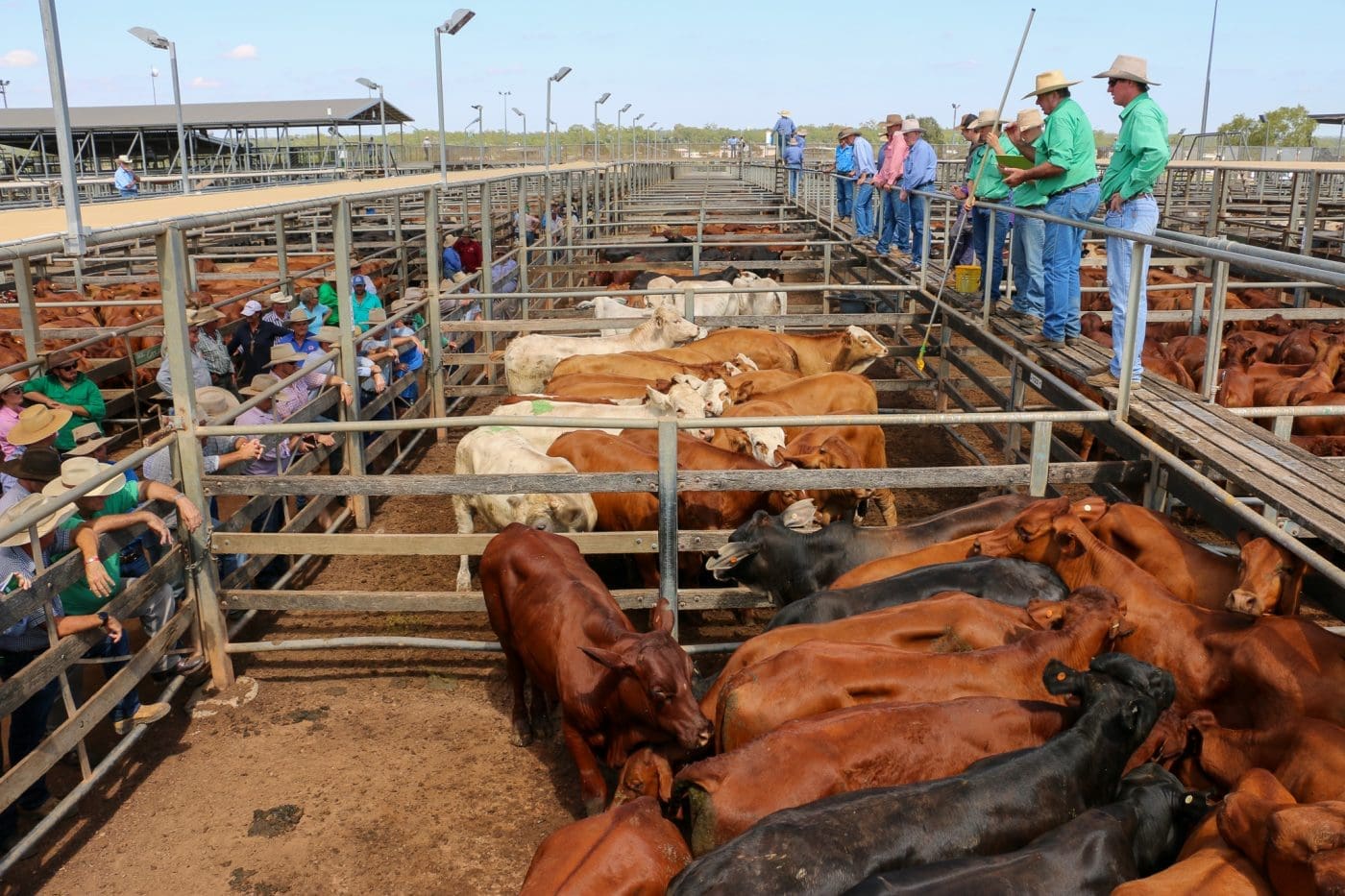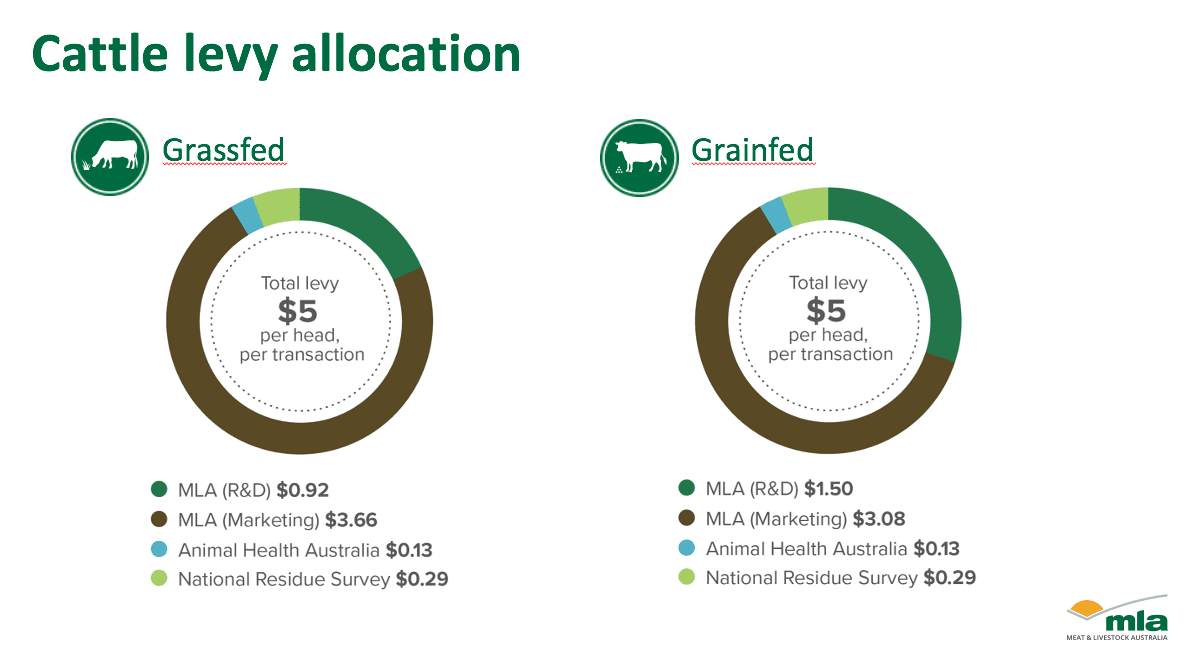Australia’s cattle transaction levy was last increased from $3.50 to $5 per head in 2006 and last reviewed three years later in 2009, when levy payers voted in favour of a recommendation to maintain it at the $5 per head rate.
Discussions around levies are divisive at the best of times, as three senate inquiries into meat and ag sector levies over the past 10 years can demonstrate.
But the issue of levy rates is regaining attention with the return of high cattle prices, good seasonal conditions and low interest rates.
Compared to when levies were last increased 15 years ago, the Australian beef industry faces some additional challenges today, beyond competition from other large beef exporting nations and lower-priced animal proteins domestically.
While those challenges have intensified, the industry is also under increasing pressure to demonstrate it is meeting higher societal expectations around animal welfare and environmental sustainability, and, aligned with that, emerging competition from a rapidly growing array of new synthetic protein alternatives.
The topic of levies came up recently at the Australian Global Food Forum when NSW Angus breeder and former MLA director Lucinda Corrigan commented that the industry should be looking to increase investment in productivity and improvements.
“If it was me… we would be doubling the levy and increasing the public private partnerships that actually help us to solve some of the big constraints we have,” she told the forum.
A few years ago then NTCA president Chris Nott proposed increasing the $5 per head transaction levy to $5.50 head, arguing the additional proceeds were needed to “empower national industry leadership and fund advertising to sell the message of what we do and how well we do it”.
At the same conference large-scale northern producer Dan Lynch advocated lifting the levy from $5 to $8 per head, suggesting that level was needed to support the multi-billion dollar industry.
Others however have argued that growers have not seen sufficient value for money from levy dollars invested to date.
In his weekly Tic Tacs article the Australian Beef Association’s David Byard this week said the levy increase agreed to by producers 15 years ago was intended to increase spending on domestic beef marketing to help arrest the slide in consumption of beef. However, despite the additional spend, domestic beef consumption declined in relation to other proteins including poultry and pork.
Successive industry inquiries over the past decade have also highlighted levy payer discontent with the current system, from concerns that growers lack adequate oversight over how their levies are spent under the current Red Meat Memorandum of Understanding, to the lack of certainty over who pays levies and how much they pay – concerns which led to the introduction of the red meat industry levy payer register last month.
It is not only the quantum of the current levy that garners attention, but also the mechanics of it.
The case for switching from a flat-rate levy to an ‘ad valorem’ or percentage of value based levy has been raised in recent years – for example by Simon Quilty here and Justin Toohey here – based on the premise that a percentage rate would provide a more equitable payment model and better reflect an animal’s true value at the time.
Percentage-based levies are used by some agricultural sectors including coarse grains and wool. The wool levy for example is based on a percentage of wool sale proceeds and is set via a vote of levy payers every three years – an event that is about to take place again from September to November.
Feedback on this topic to an inquiry into agricultural levies held in 2014 indicated that some preferred the current flat rate system for its simplicity, while others felt a percentage rate would disadvantage those with higher-value cattle – studs and premium-end Wagyu cattle for example. Capping the levy at a maximum rate per head was proposed by Mr Quilty as one way to ameliorate this concern.
What are your thoughs on cattle levies? Share your view in the comment box below
A brief history of the Cattle Transaction Levy rate
The Cattle Transaction levy is designed to cover four main requirements: marketing and market development; research and development; National Residue Survey Monitoring, and Animal Health Australia.
In 1998 the Cattle Transaction Levy was set at $3.50 a head.
In 2006, following a vote of 9800 levy payers (from an estimated population at the time of 80,000), the levy was increased by $1.50 to $5 per head, with the additional funds to be channelled into marketing.
The argument for increasing the levy centred around the perceived need for greater marketing efforts to help Australia sell an expected increase of 335,000 tonnes of beef production from 2006 through to 2009, due to industry investment and herd growth.
Proponents argued it was imperative the Australian industry build a competitive position in key export markets during the period that North America was precluded because of BSE, and to combat a perceived threat to export markets from South American beef powerhouses including Brazil and Uruguay.
Then-Agriculture Minister Peter McGauran placed a sunset clause on the levy increase, stating that before the end of 2010, industry would need to present the Government with a new proposal for a revised levy rate, otherwise it would return to $3.50/head.
In 2009, a review of the levy by Beef Marketing Funding Committee concluded that having created a competitive position, particularly in markets such as South Korea, it made little sense to reduce marketing expenditure in those markets “given the current and expected ongoing volatility in a highly competitive global meat marketing environment”.
The committee also noted that as marketing levy funds were not CPI adjusted (as they were subject to a flat rate levy), therefore real marketing expenditure was declining over time.
Additionally, projects including NLIS had lost their funding status and were now drawing on marketing funds.
A subsequent ballot by levy payers at the 2009 MLA AGM resulted in 72.5 percent of eligible levy payers who voted supporting the case for no change, meaning the levy remained fixed at $5 per head.
In the year the levy was increased, 2006, the primary price indicator for Australian cattle, the Eastern Young Cattle Indicator (EYCI) averaged 317c/kg.
In recent years it has risen to double that level and now stands three times higher than 15 years ago, after pushing above 1000c/kg late last month. After pushing to a record of 1031.52c/kg last week, the EYCI lost some of its recent momentum yesterday to close at 994.69c/kg.
The $5 per head grassfed cattle transaction levy generated $63 million in total revenue for MLA in 2019-20, as part of total overall revenue for the organisation of $270 million, which included levy income from grainfed cattle, sheep and goat levies, matching Government funding for research and private funding from partnerships through the MLA Donor Corporation – more information can be found on MLA’s annual reports page here.


